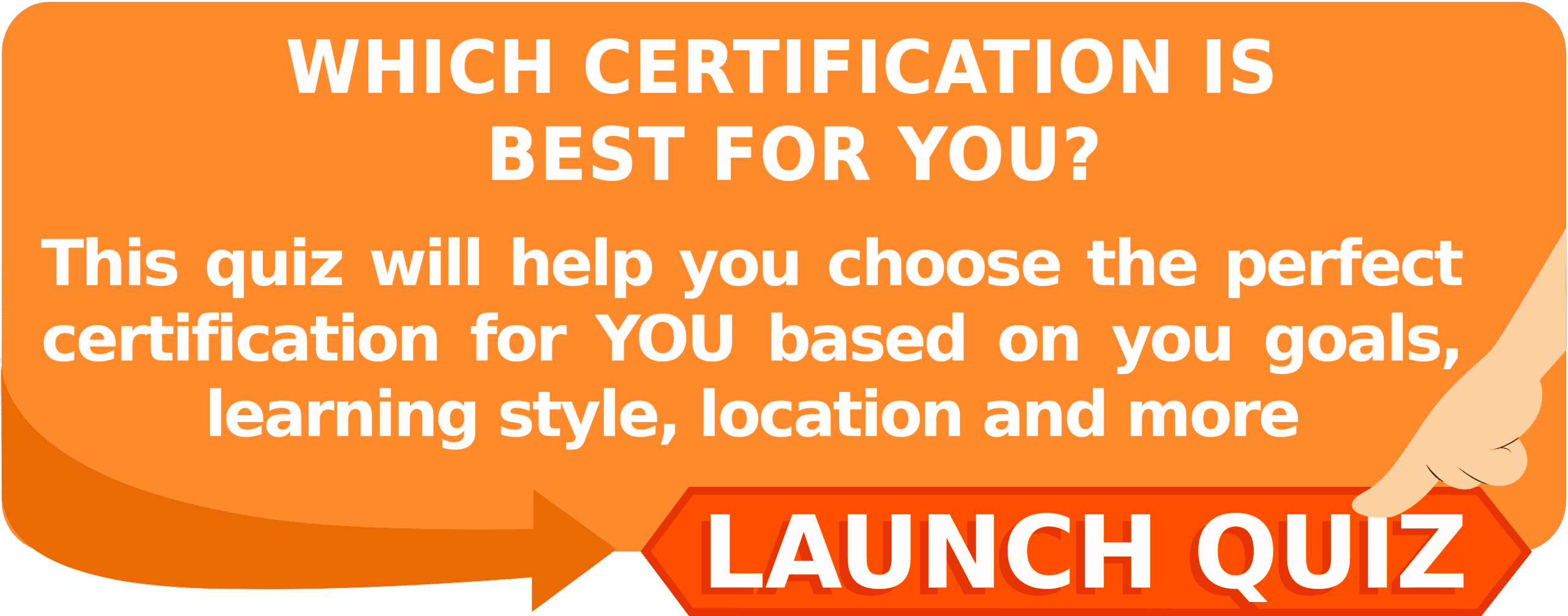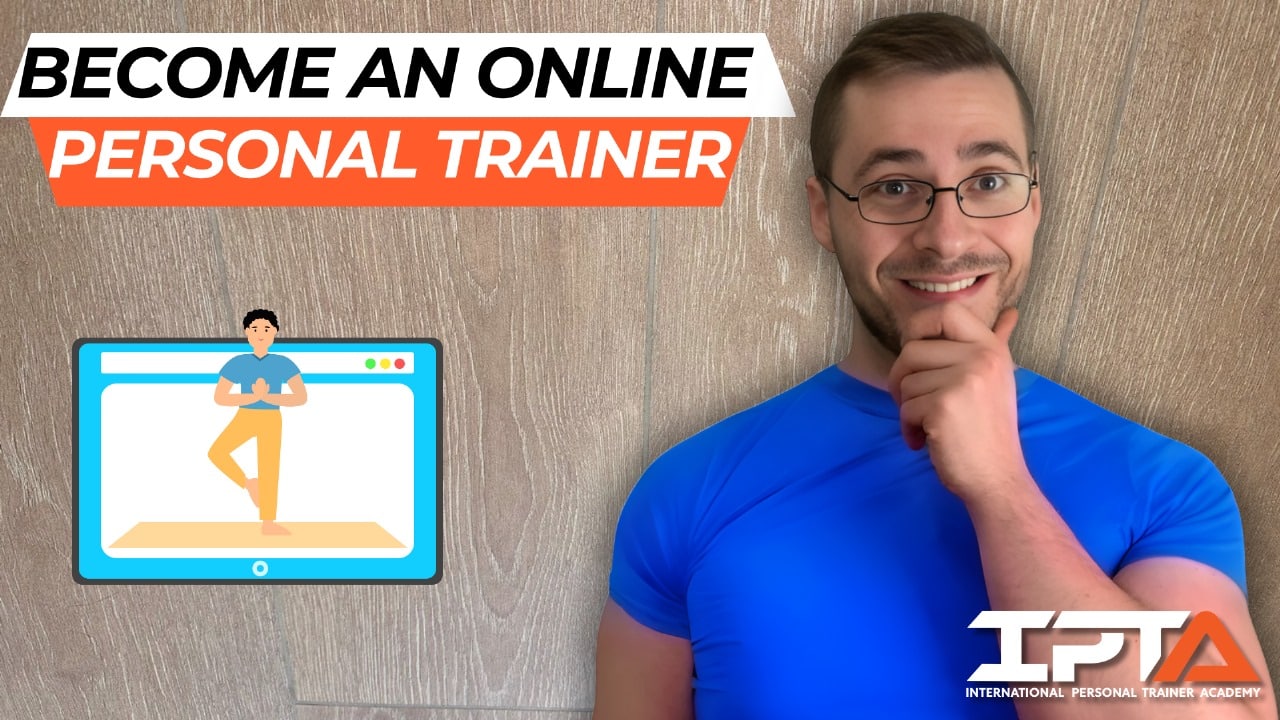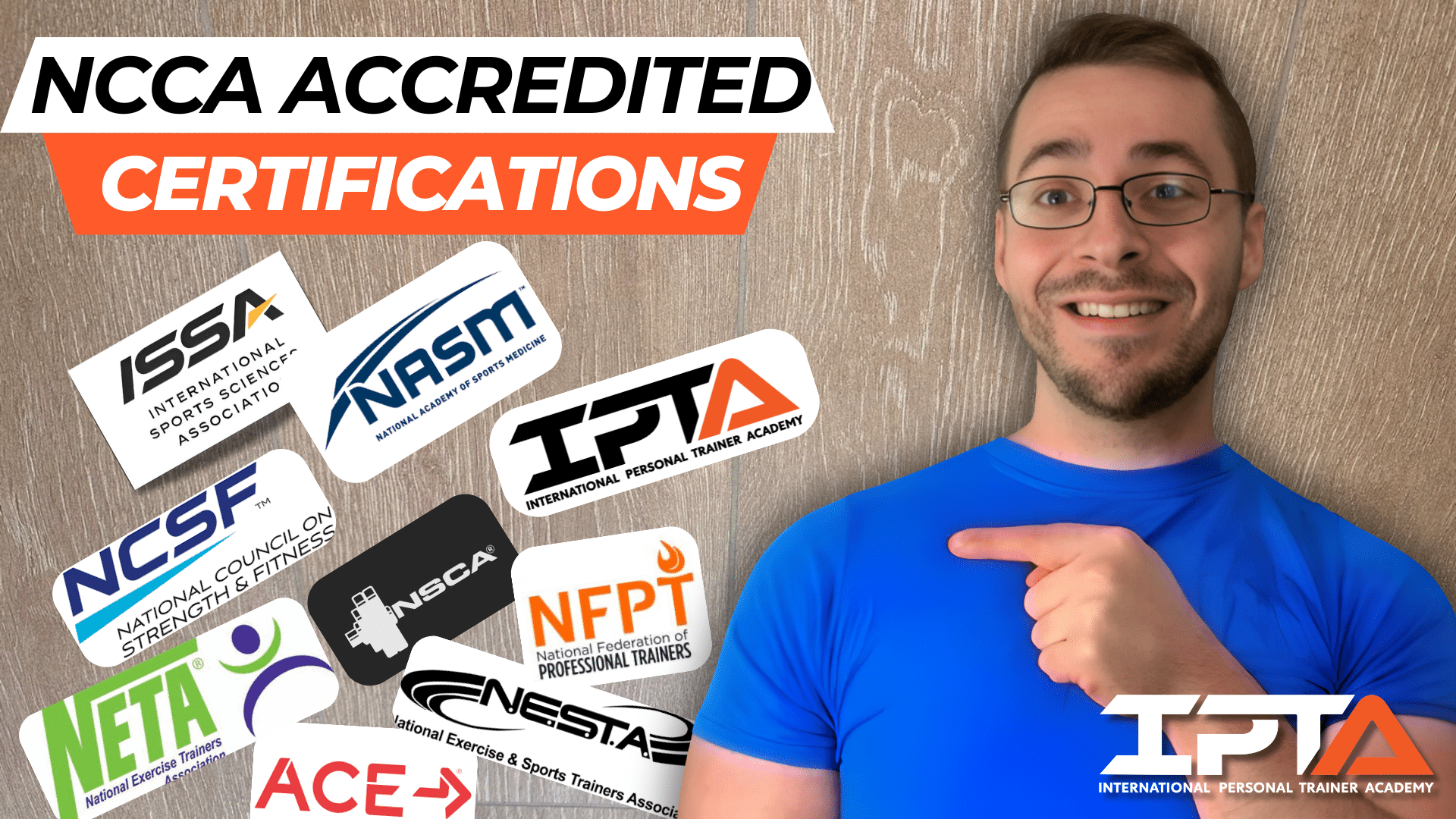
To become a personal trainer, you need to take the following steps:
- Fulfill your training certification prerequisites
- Pick a top NCCA-accredited personal trainer certification
- Study, prepare for, and pass your certification exam
- Put together your resume and apply for jobs
- Grow your clientele
- Stay on track with continuing education
Personal fitness trainers act as both entrepreneurs and caregivers.
They get the best of both worlds.
So, let us discuss the following steps you can take to jumpstart your dream job: personal training.
As always, we love serving as a guide to newbies coming into the personal training business and we’ve highlighted our top recommended certifications for you.
This article guides you through the steps for making the right decision.
So, with that said, let’s jump straight into it.
Exclusive TA Offers |
||
Most Popular Cert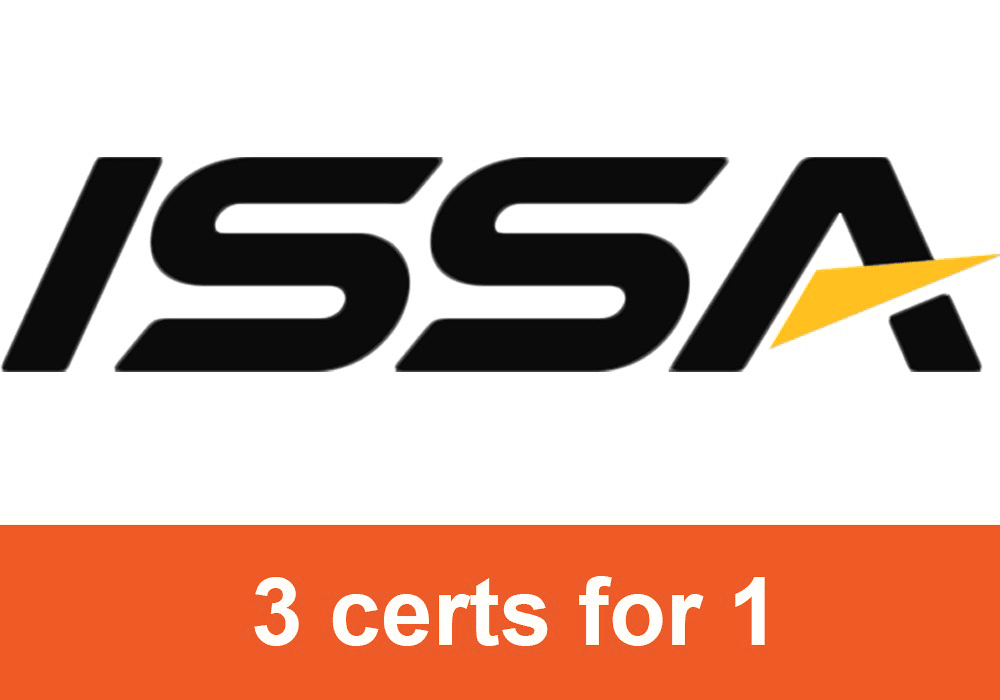
| Great Option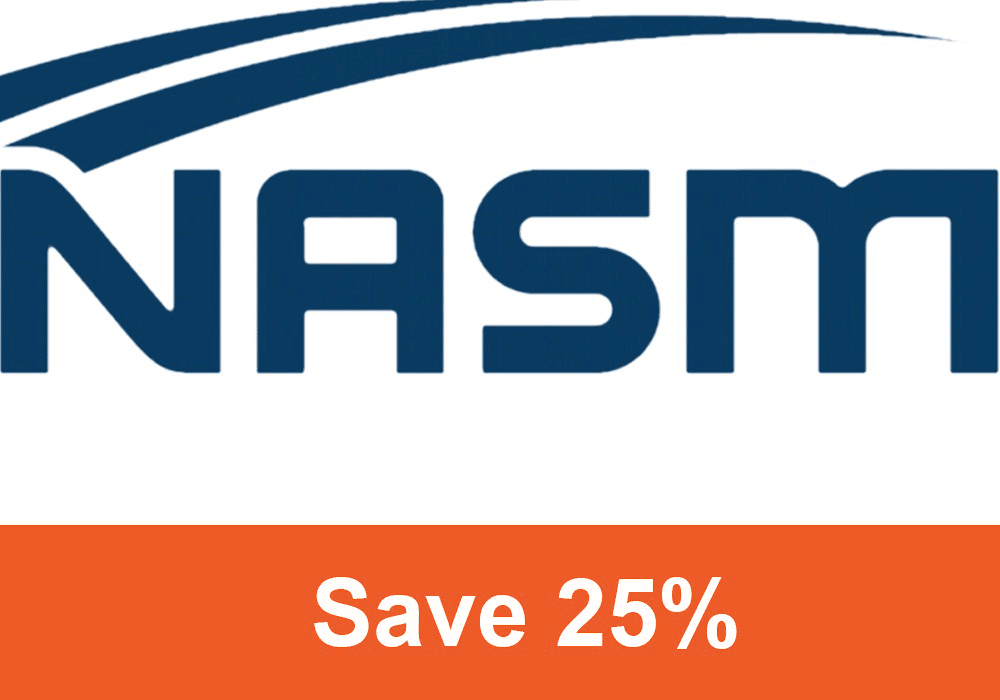
| Best Cert for you? 
|
Good Option
| Good Option
| Good Option
|
Steps to Become a Personal Trainer
The first step to becoming a personal trainer is selecting the certification you will pursue. Once you study and pass your CPT exam, you will need to pply for personal trainer jobs or look for clients if you want to be a self-employed trainer, and commit to continuing education.
1. Prerequisites
Before signing up for the certification that qualifies you to train clients, you need to fulfill some basic obligations, known as prerequisites.
We define a prerequisite as a condition, criteria, or qualification you must adhere to before being granted access to a chosen pursuit.
Requirements to Be a Personal Trainer
To become a personal trainer, you need to earn your accredited certification, which requires a GED/high school diploma and CPR/AED certification. Additionally, a passion for fitness and helping others is a must if you want to be a personal trainer.
In this case, the prerequisites we refer to are the ones that allow you to gain the necessary qualifications, which are themselves, requirements for you to be allowed to work as a PT.
Personal Trainer Education Requirements
Personal education requirements essentially boil down to having a high school diploma and CPR/AED certification, which are prerequisites for getting virtually every NCCA-accredited personal trainer certification.
Be Passionate
So what does it take to become a personal trainer?
We think the first real important prerequisite you need before you become a successful personal trainer is the desire and passion for health, wellness, and fitness.
You can learn how to be a personal trainer, and pick the top personal trainer certification, but you must have a passion!
You need to exemplify health, wellness, and fitness in your own life.
If you are out of shape, out of breath, and eat terribly, do you think you will end up as a good personal trainer?
Absolutely NOT!
It makes little sense that you’d immediately feel prepared to pursue a career where you spend your time fixing those very problems for other people.
So to this end, the first prerequisite, albeit an informal and unofficial one, is to find passion in fitness training and apply it to your own life.
Practice what you preach, walk it as you talk it!
Age
The first truly formal prerequisite concerns your age.
For most PT qualifications, whether that’s a certification, diploma, or degree, you need to be at least 18 years of age.
At this age, most people will have developed some degree of adult sensibility and responsibility, and of course, will have learned the basic skills of independent life.
Being of age correlates closely with the next prerequisite.
Do You Need a Degree to Be a Personal Trainer?
You don’t need a degree to be a personal trainer. However, a bachelor’s degree in an exercise-science-related field is certainly helpful. It’s highly recommended that you have an NCCA-accredited personal trainer certification to ensure a successful fitness career.
Education Required to be a Personal Trainer
There are no legal educational requirements to be a personal trainer in the United States. However, you should always get an NCCA-accredited personal trainer certification before training clients to ensure you have the right skills, and these require completion a high-school level education.
This simply means you have the right level of literacy and basic knowledge required to tackle the scientific and technical aspects of health and fitness education.
As part of the personal trainer job description, you must meet your prerequisites.
Having a secondary education diploma also shows your competency when it comes to hunkering down for studying and taking challenging tests.
Primary Responder Certifications
Primary response certifications represent crucial prerequisites when it comes to beginning your journey of certification/qualification in fitness.
That’s because prescribing and directing exercises, training clients, and really, any physical activity brings with it a degree of medical risk.
Your clients may suffer an injury or an unexpected medical emergency.
As a person who is providing care and elevating the state of other people’s health, it is important to be in a position to aid a client’s well being in a worst-case scenario.
What do you need to become a personal trainer?
You need at least a CPR/AED certification, and, in some cases, First Aid.
First Aid, CPR (Cardio Pulmonary Resuscitation), and AED (Automated External Defibrillator) certificates need to be regularly renewed to remain current.
You need your primary emergency responder certifications for your own legal and insurance protection as well.
Sometimes, personal trainers may be required to have personal trainer liability insurance, too.
Learn more about personal trainer insurance, if you haven’t already.
2. Qualifications and Certifications
Now let’s look at the actual certifications that allow you to gain the authenticity to operate as a fitness professional. We’ll look at the different types of qualifications and where they would be applicable in a career in fitness.
Certified Personal Trainer
The CPT certification remains the most fundamental, popular, and easy to obtain qualification for a new career in fitness.
What is a personal trainer certification?
Most certifications call this the “CPT” certification of any given certifying agency, for example, “American Council on Exercise (ACE) CPT” or “The National Academy of Sports Medicine (NASM) CPT,” although different institutions use different abbreviations.
A CPT cert typically represents the tentpole qualification of any institution or agency that certifies trainers.
It provides entry into the fundamentals of health and physical fitness science and prescription.
Common topics you will learn about from a CPT cert include:
- Basic anatomy and biomechanics
- Cell and tissue biology and biochemistry
- Exercise science and practice
- Nutrition and diet coaching
- Program design
Personal training certifications require recertification every couple of years so you can remain current and knowledgeable.
Do you need a certification to be a personal trainer?
Most likely, yes, and you will learn a lot through the process of getting certified.
Almost all employment opportunities will require that you get certified before even applying for a job.
Some of the most popular and industry-accepted, best personal trainer certificates come from the following:
- NASM Personal Trainer (the NASM CPT certification has the most tests taken every year)
- ACE Personal Trainer
- International Sports Sciences Association, ISSA Personal Trainer
- ACSM American College of Sports Medicine, ACSM Personal Trainer
- NSCA National Strength and Conditioning Association, NSCA Personal Trainer
- NFPT National Federation of Professional Trainers, NFPT Personal Trainer
But how much does it cost to become a personal trainer?
Keep in mind that a personal trainer certification costs between $100 to $1000, making it the most inexpensive way to qualify. You can look through each of the major organizations and find the cheapest personal training certifications if you are budget conscious.
Exclusive TA Offers |
||
Most Popular Cert
| Great Option
| Best Cert for you? 
|
Good Option
| Good Option
| Good Option
|
Click on the links above to get updated information about them.
Vocational College
A vocational college, also known as a trade school, is a college-like, short-term course aimed at developing your practical and technical capabilities as a PT.
Unlike a certification, which equips you mainly with theoretical know-how, vocational training delves into health and fitness prescription in a more nuanced way, giving you the skills to operate in all aspects of the trade as a trainer.
Learning how to become a personal trainer at a vocational college pairs you with an expert in the fitness field guiding you through it all.
Vocational colleges make up sort of an in-between of certification and getting a college degree.
This is also true in the way they are priced, often coming in between $10k – $20k per course.
University or College Degree
The University of college degrees appears at the top end of possible qualifications as you would imagine.
A university degree program can appear the most in-depth, focused, and knowledge-rich approach towards learning about fitness, however, this is not always the case.
A degree offers the most expensive way to qualify for a job in health and fitness, but it also opens up way more doors than anything else.
In this case, how much do personal trainers make?
Top income earners in the industry typically have a degree such as a bachelor’s or masters in sports medicine, kinesiology, physiotherapy, nutrition science, and dietetics… the list goes on.
Fitness professionals who have a degree as a credential hold an immediate power play with potential work opportunities.
For instance, a job as an athletic trainer may require a degree.
Also, some specialist qualifications actually require that you have a college degree before you can obtain them.
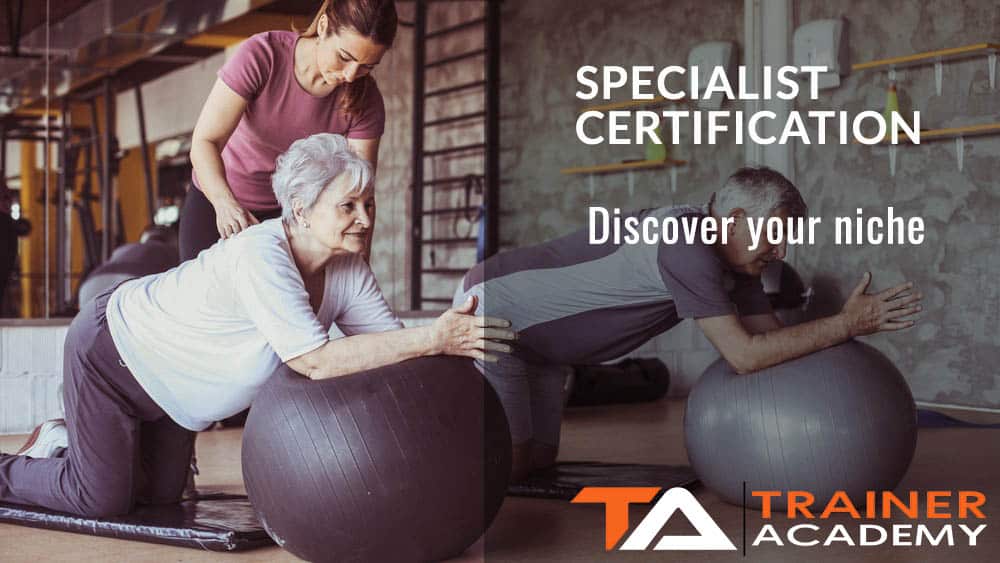
Personal trainer specialties?
Let’s discuss.
We’ve gone over the standard CPT certifications and how that’s a great entry point as far as qualifications are concerned.
Now, let’s look at specialization, and what sorts of certifications you can get in specific areas of focus.
For example, one category of specialization is focusing on certain special populations. This area in the fitness field narrows in on clients or population groups with very specific needs, goals, and sensitivities.
From disabled people, all the way to elite professional athletes, specializing in a unique population group offers a popular way to hone in and niche down on a particular market segment.
The NSCA CSCS represents a top-tier example of a unique population group specialist certification, in this case, focusing on strength and conditioning in professional sports. You will want a CSCS practice exam and some CSCS study materials for that test as it’s known as one of the most challenging exams in the fitness field.
You can also specialize in subjects such as nutrition. Nutrition is an inseparable component of good health and fitness prescription, so we strongly suggest you get some form of nutritionist certification in your repertoire.
Certification organizations offer many more additional types of specializations. Discipline-specific courses like getting a yoga certification or a pilates certification include some examples, while other specializations contain broader focuses such as body transformation and group fitness.
Your choice will all depend on the areas you already excel at and where you want to take your fitness career as a future personal trainer.
About Accreditation
Accreditation makes up another important consideration when discussing certifications.
Accreditation is a certification’s certification, that is to say, in the same way, you need a certification to gain authentic recognition, a certification needs to pass the grade in terms of industry standards.
These standards form a certain quality control and are granted by a body controlled by high-level experts and decision-makers, the gatekeepers so-to-speak.
When it comes to certification, two accrediting bodies provide the sort of accountability you need to see from a quality certification: the NCCA and DEAC.
The NCCA accredits most recognized certifications, with the exception of the ISSA personal trainer certification, which the DEAC approves.
NCCA stands for the National Commission for Certifying Agencies and a NCCA personal training certification is the gold standard in fitness accreditation.
DEAC stands for Distance Education Accrediting Commission.
Both these bodies hold legitimate weight when it comes to authenticity, but NCCA definitely gets the edge due to the number of certifying institutions backed by its seal.
Tons of non-accredited courses and certs appear on the internet. You can take these for sure, but you can only count them as an educational experience at the most since they will not be industry-recognized in terms of a certification.
Supplementary Skills
While you certainly need to have your fitness-specific qualifications in order, we also suggest you supplement these credentials with qualifications that will build you into a complete entrepreneur.
A certification, course, diploma, or degree in a practical field like sales, marketing, or business management will serve you tremendously as a personal trainer.
In most cases, you’re operating as your own business, so best to equip yourselves with all that you can to be able to nail a great business operation.
Click on this link to access awesome resources on Trainer Academy.
3. Exam Prep and Date
For this section, we’re going to deal specifically with certification through an accredited agency and the examination process therein.
Once you’ve purchased your course and its relevant study material, it’s time to begin preparing for the big day.
Most courses come with a variety of different study material categories. Let’s break them down real quick:
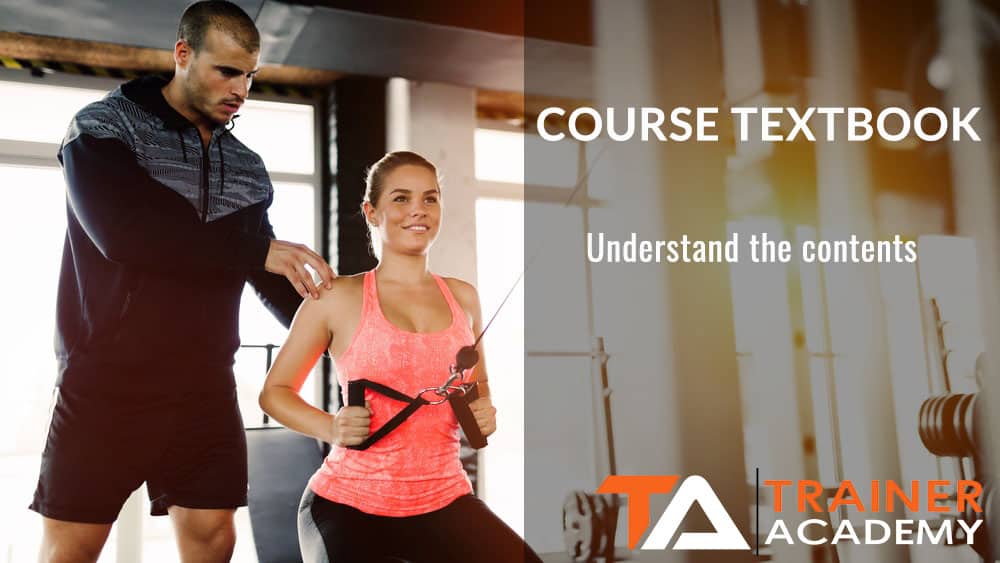
The course textbook forms the main component of any study material package. The textbook gives you the meat and potatoes, the stuff you actually learn that will apply in the exam and beyond.
Needless to say, most of your attention should go into understanding the certification textbook contents.
Practice Tests/Exams/Quizzes
These mock assessments resemble the final exam you’ll be taking eventually so pay attention to these.
Practice tests appear either shorter than the actual exam or are full-length exam-style question forms.
Most of the questions in these tests come from past exams or modified versions of potential current exam questions.
These quizzes expose you to the conditions you can expect when writing the actual test, and allow you to sharpen your skills and build the mental toughness required to succeed.
Try scoring well above the passing grade consistently, say 85% at least on each attempt to guarantee success when it comes down to it.You can get the free ACE practice test or ACE study questions from Trainer Academy to up your game if you choose the ACE CPT. We also have a NASM practice test or a free NASM study guide if you pick NASM instead.
Study Guides/WorkBooks
Workbooks or study guides summarize the key concepts found in the main textbook into smaller booklets.
These books should help you hone in on the most significant aspects of the course material and ensure that you have grasped what you need to grasp from the textbook.
Study guides often assess your competence by using fill-in-the-blank type assessments as part of the study and exam prep process for more engaging retention of information.
If you choose NASM or ACE certified personal trainer, the free study guides from Trainer Academy may be of use to you. We also have an ACSM CPT study guide and an ACSM practice test, which will serve you well if you pick the ACSM certification, because they don’t have too many study resources on their platform.
Workshops, Clinics, and Virtual Lectures
Many certifications offer more interactive study options that engage you in activities such as workshops and even live training.
More common, however, organizations offer virtual lecture libraries such as video or audio guides.
These forms of studying allow you to experience your coursework in a way that resembles in-person training, which allows for an extra dimension of knowledge retention.

Make sure to try and structure your studying in a way that lets you make use of time efficiently and effectively.
Having a schedule, and breaking up your study into chunks and timed milestones allow you to progress comfortably and avoid the stress of last-minute cramming.
Here at Trainer Academy, we actually provide study blueprints for most major certifications to help you structure your study and prep effectively.
Third-Party Study Resources
To be quite honest, many of the study material packages that come standard with certification registration lack overall content quality.
They provide only the bare minimum, which in some cases, only includes the textbook.
That’s why at Trainer Academy, we’ve taken most of the major exams and broken them down to create the most comprehensive MVP study packages for any major certification.
Flashcards, anatomy guides, mnemonic charts and cheat sheets that allow you to quickly and effectively digest the mounds of knowledge needed to succeed, all structured into a nifty study schedule.
You could go at it on your own, but we suggest you get a little help from experts who have done the certs for you.
A click on the links below will be very helpful to you.
- NASM MVP Study Package
- ACE MVP Study Package
- ISSA MVP Study Package
- NSCA CPT MVP Study Package
- ACSM MVP Study Package
The Exam
How long does it take to become a personal trainer?
Day, month, weeks…
Until you pass your exam!
Now that you’ve waxed all the prep and studying necessary, it’s time to get to it and take that test.
Different certifying agencies use different exam practices, but the general procedure is: you pay for your exam (usually included in the entire course fee), then you register for it by picking a date within the allotted time frame from registration, then finally, you find a suitable location to write your exam if it is a proctored one.
For your convenience, ISSA also offers personal trainer online certifications.
In fact, ISSA is the best online personal trainer certification, so if you’re picking between ISSA or NASM and you want to do it online, ISSA should be the way to go.
Once writing the exam, the procedure also varies based on the certifying agency in question.
The amount of time, if any at all, the number of questions and the passing grade are not a fixed constant, so make sure whichever cert you go for, you are well aware of these specifics.
4. Passing The Exam
Want to know how to get your personal trainer certification?
It’s simple; pass the exam to reach your goal!
Most cert exams require a passing grade of 70%, but this can vary, so again, check the specific criteria of the exam you’ve chosen.
Different certifications also differ in difficulty. For instance, ISSA has a pass rate of 81% while NSCA has one of 54% at the time of writing. When comparing NSCA and ISSA vs ACE, ACE lands somewhere in the middle with a 71% pass rate.
Consider the difficulty of the exam when deciding which course is for you.
If you don’t pass the first time around, which is common for the more difficult certs such as the NASM certified personal trainer and NSCA, you can retake the paper for a fee.
After failing, you will ordinarily need to wait a minimum cool-down period in which you can prepare again and brush up on the areas you were lacking.
On your next attempt, after passing, of course, you can begin to step into your brave new world as a fitness pro.
5. Designing Your Kick-ass Resume
Job hunting is a job in itself and requires you to extend both your technical prowess as well as your personality to get the gig.
One valuable asset you will need to get a shot at a job in fitness, or any job for that matter is a killer personal trainer resume.
A resume records your attributes, accolades, and credentials that stand to qualify you for a given position, either as a representation to potential employers or as a testament to prospective clients.
So how do you put together a winning resume?
Let’s take a look at a few simple steps.
Be Brief, But Include Everything
When writing a winning CV, you want to make sure you have all the relevant information, but at the same time, you also want to make it as concise a read as possible.
Just imagine, your would-be employer at a table, probably sifting through tons of resumes per day, and the mental will required to read long swathes of text. Make it easy for them.
At the same time, you also want to make sure you give them all you’ve got in terms of skills, experience, and credentials.
Make it skimmable but informative.
Make It Modern and Eye Catching
A mistake many people seem to make when putting together a resume is they try to make it too formal and clinical.
The birth of the modern CV is stooped in a tradition of having a formal, corporate document that simply lists skills and credentials with a brief motivational cover letter and perhaps a few references.
However, those were the old days. Today, many corporate environments adopt a more fresh, loose-collared approach to the way they handle work culture, including what they look for in new hires. Take that and add the fact that the world of fitness presents an inherently fun and upbeat environment.
For this reason, it would be valuable to make your resume pop with some personality and modern flair. Make it attractive and allow it to tell a story rather than just read off a bunch of listed facts.
Use images, icons, and colors just as much as you use words, facts, and figures. In other words, the way your resume looks represents your personal brand as much as it is a list of your qualities.
Of course, you still should maintain a degree of seriousness and structure, too much flair and funk and it will just come across as goofy and try-hardy.
It might be a great idea to get a graphic designer with some creative copywriting chops to help you put the layout together.
Make It Mobile Friendly
In this day and age, you will likely send your resume out in electronic form. It’s also very likely that it will be read on a mobile device.
People rarely read important documents in a physical paper form in the modern age.
Electronic reading, especially on more portable devices such as tablets and smartphones is the in-thing, so, make your resume adaptable.
Exclusive TA Offers |
||
Most Popular Cert
| Great Option
| Best Cert for you? 
|
Good Option
| Good Option
| Good Option
|
6. Jumping Into The Job Market and Acing Interviews
With your sparkly new resume done and dusted, it’s time to present yourself, so you can start making money as a personal trainer.
How to Become a Personal Trainer at a Gym
To become a personal trainer at a gym, first check the certification requirements of the gym where you want to work, from there contact the hiring manager or call the front desk to see where you should apply. You can also look at connecting with hiring managers for that gym on LinkedIn or other professional networks.
Once your potential employers consider your application, they will ask you for an interview with whoever is in charge of hiring at the gym, health club, or performance center you signed up for.
Interviews can be nerve-wracking, so keep your cool while also confidently displaying your value.
We present to you a few useful ways you can navigate this daunting step.
Do Your Research
The first part of your interview happens before you even set foot in front of your prospective employer: researching the gym.
Each place of employment offers its own unique history, values, principles, and business practices.
Its brand stands for something with a unique corporate structure.
You also need to learn about your potential position and what’s required of you so you can represent clearly why you’d be the right person to hire.
Practice Answering Potential Questions
When it comes to job interviews, gyms tend to use certain generic questions during the process.
You can put your best foot forward by practicing how you would answer these beforehand.
Here’s a quick rundown of questions you will likely be asked so you can get cracking:
- Are you willing to travel?
- Do you believe you are overqualified for this role?
- Do you work well under pressure?
- How fit would you rate yourself?
- Please talk to me through your resume?
- What is your best on the job skill?
- What do you consider to be good leadership skills?
- What do you find interesting about this gym/fitness club?
- What do you know about the fitness industry?
- What do you know about us?
- What is the name of our CEO?
- What is your conflict resolution strategy?
- What is your definition of success?
- What is your dream career?
- What is your greatest personal achievement?
- What is your work experience?
- What made you interested in this position?
- What questions do you have?
- What value can you offer the company?
- When did you find your passion for fitness?
- Where do you see yourself in 5 years?
- Who are our competitors?
- Who was your favorite manager and why?
- Why are you the right person for this job?
- Why did you choose a career in fitness?
- Would you be willing to work nights and weekends?
Gyms may also ask you to take one of their employees through a demo training session so be prepared to do that too, if you’re applying to be a personal trainer or class instructor.
Get Familiar with the STAR model
The STAR model stands for Situation, Task, Action, Result.
Many hiring personnel commonly use this behavioral aptitude assessment to evaluate your ability to handle common, or even less common workplace scenarios.
They may present you with a scenario, and assess your response based on how you describe the task you would need to execute, the actions you would take to do that, and the result of those actions.
Interviewers usually slip in STAR assessments covertly as one of your regular old interview questions, so just be alert and watch out for the patterns.
Dress to Impress
Presentation matters when heading into an interview. When it comes to a dress code, you should match the mood of the job you’re gunning for.
That means your best bet for a job in fitness is smart casual.
You might be tempted to wear a business suit, but this is definitely the wrong crowd for that,
The key to dressing up for an interview is to dress appropriately, not just smart.
7. Polishing Your Skills and Experience
It’s important to learn that you never stop learning.
Once you get the job, you must take on a constant path of improvement and development.
Knowing how to coach means more than just understanding scientific principles and applying them to programs or plans.
Other moving parts need to come together for you to deliver the best results and experience for your clients.
If you really want to take your personal training career to greater heights, we advise you to click here for updated info on the various certifications.
Some of these skills include:
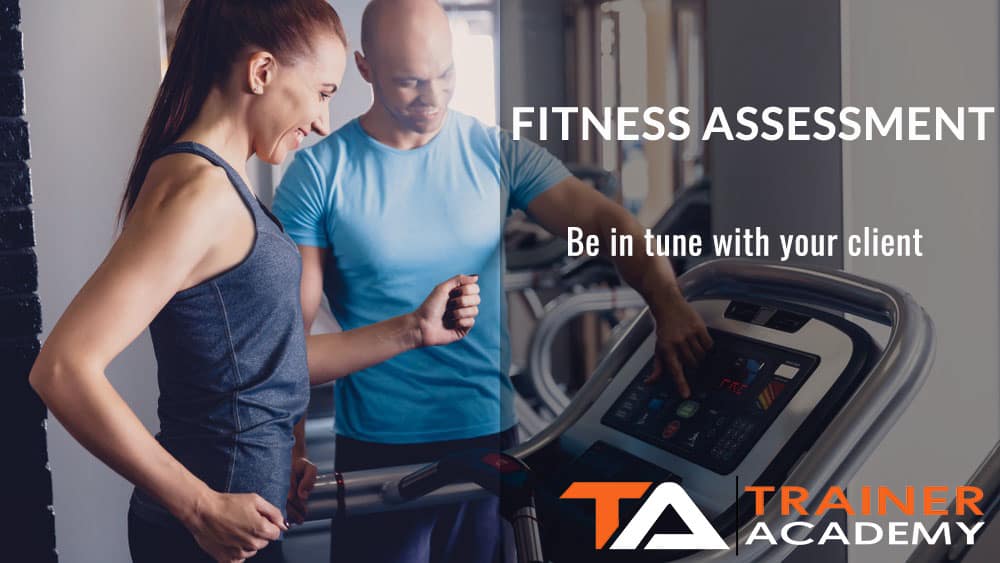
You need to develop a keen sense of where each of your clients is in terms of their current fitness levels.
This will allow you to effectively develop the right protocols and plans for the intended results and fitness goals.
Sharpening this skill helps you cut downtime and get straight to work on improving lives.
It also allows you to pinpoint potential weaknesses, risk factors, and contraindications that could result in medical emergencies.
Communication
Being a personal trainer heavily relies on fostering good relationships with people, these relationships need quality communication.
As you engage with more and more clients, pay attention to how you communicate and improve over time.
Goal-wise, listen and then deliver appropriate feedback. From a trainer’s perspective, your role as a communicator is to gather data and offer guidance and support.
Learning rich communication skills such as NLP can also boost your ability to relay information back and forth much more effectively.
Leadership
Your role as a PT makes you a leader by default.
To be a great leader, you must be prepared, but also able to react to unexpected situations at the drop of a hat.
Taking initiative, being proactive, and conveying confidence is key in instilling the correct sense of authority you will need to push and motivate clients
Another key trait of leadership involves leading by example, not just by command.
Be the change you want to promote in your clients.
Analytical Thinking
To be a successful personal trainer, communicator, and leader, you must be able to observe on an analytical level. Often, the most important things people communicate are non-verbal.
By paying close attention to your client’s behavioral patterns and non-verbal cues, you can paint a more detailed picture of what needs to be done and gather a considerable amount of extra data.
Nutrition and Weight Management
A common trend within the fitness prescription business is that many trainers forego, or just undervalue the importance of weight management and nutrition coaching.
Simply administering exercise programs does not lead to fitness goals. Results depend on the habits at home, and as they say, gains are made in the kitchen.
Being able to coach nutrition and weight loss as effectively, if not more so than exercise is the key to the results both you and your clients aim for.You might want to become a nutrition coach as well so you can take that extra step towards helping your clients and add your nutrition coach salary to your income.
Exercise Mechanism
It goes without saying that as a PT, you need to have a deep knowledge of exercise mechanisms.
That means not just knowing a whole bunch of different exercises, but actually being able to understand the mechanics and appropriate application of each.
8. Maintaining Your Credentials
As a certified trainer, you need to keep educating yourself.
Not only will this keep your skills and knowledge sharp, but it’s also actually a mandatory requirement.
When it comes to PT certs, you will need to renew your credentials every couple of years or so, depending on the criteria of your given cert.
In between the recertification period, you must rack up credits that display your continued engagement with your work as a trainer.
These credits, known as continuing education units, or CEUs, come from participating in sanctioned activities relevant to health and fitness practice.
These include:
- Attending workshops and clinics
- Taking courses or other certifications
- Assessments and tests
Each cert requires a specific number of CEUs before you can be allowed to renew your certification.
You will also need to pay a recertification fee at the end of each renewal cycle.
Benefits of Being a Personal Trainer
The top benefits of becoming a personal trainer include:
- Doing what you love and have passion for
- Flexible career paths
- Multiple job opportunities and arrangements
- Helping people on a daily basis
- Range of income potentials
- Set your own schedule
- Allows you to stay in shape
Steps to Become a Personal Trainer Overview
- Fulfill all prerequisites.
- Research NCCA-accredited personal trainer certification programs.
- Select the program which best fits your goals.
- Study and pass your CPT exam.
- Design a ‘kick-ass’ resume.
- Apply for jobs and crush your interviews.
- Enhance your skills and gain experience.
- Maintain your CPT and related credentials.
8 Steps to Become a Personal Trainer
| Step 1: Fulfill all prerequisites. | Step 2: Research NCCA-accredited personal trainer certification programs. | Step 3: Select the program which best fits you! | Step 4: Pass your CPT exam. | Step 5: Design a "kick-ass" resume! | Step 6: Apply for jobs, ace your interviews! | Step 7: Enhance your skills and gain experience. | Step 8: Maintain your CPT and any other related credentials. |
|---|---|---|---|---|---|---|---|
| 1. 18 years of age. | 1. Fits your needs/wants? | 1. Enroll. | 1. Get certified! | 1. Clear and concise. | 1. Research prospective employers and companies. | 1. Communication and leadership are key. | 1. Attend seminars or webinars. |
| 2. High school diploma or GED. | 2. Aligns with your career path? | 2. Purchase all required study materials. | 2. Failed? Check the retake policy. | 2. Avoid being too formal. | 2. Practice answering potential interview questions. | 2. Critical thinking ability. | 2. Attend some workshops and clinics. |
| 3. CPR and AED certifications. | 3. Cost-effective? | 3. Study! | 3. Mobile-friendly. | 3. Know the STAR model. | 3. Exercise mechanisms, anatomy, and proper form. | 3. Obtain other certifications. | |
| 4. Government-issued form of ID. | 4. Program duration? | 4. Dress to impress! | 4. Nutrition and weight management topics. | 4. Take courses and assessments. |
Frequently Asked Questions (FAQs)
What are the steps to becoming a certified personal trainer?
First, you must fulfill all prerequisites and education requirements so that you may select and enroll in an NCCA-accredited personal trainer certification program. Purchase all required study materials to prepare for your certification exam. Once certified, create a resume and apply for jobs. Keep up with your CECs, too!
How can you become a certified personal trainer?
In order to become certified, you must pass your personal trainer certification exam. If you fail, you retake your exam, and will oftentimes have to pay a small fee.
What is the best personal training certification?
With its high-quality content, study materials, and specializations offered, the NASM-CPT takes the crown for being the most respected certification program in the fitness industry. However, that is not to say that NASM is the best fitness trainer program for you and your career path.
How difficult is it to become a personal trainer?
Becoming a personal trainer/fitness instructor is really not difficult at all! Just be sure to give yourself ample study time, and review practice certification exam questions.
How long does it take to become a certified personal trainer?
This depends on the personal trainer program you choose and your educational background. For some, it can take days or weeks, whereas for others, it may take months or close to a year.
Do you need to attend college to become a personal trainer?
No. While it is not required to attend college or higher education to become a certified personal trainer, some personal trainers may have an associate’s degree, bachelor’s degree, or master’s degree in exercise physiology, kinesiology, or related fields. If you are a student, make sure your degree program is accredited.
How much do personal trainers make?
A personal trainer’s earning potential depends on the following factors: location, place of employment vs. being independent, experience and years in the field, educational background, and working full-time vs. working part-time.
How can you become a certified personal trainer for special populations?
In order to become a certified personal trainer for special populations, you must first get certified as a trainer. Then go on to pursue specialization and experience related to the potential clients you want to work with.
How many sessions do you need to become a master certified personal trainer?
To become a master certified personal trainer, you must have a minimum of three years of training 10 or more client hours per week utilizing the OPT model, according to NASM. Other personal training programs are similar in that you would be required to have some years of experience in the field and to have completed other specializations or certifications before applying.
How can I become an online personal trainer?
In this day and age, learning how to be an online personal trainer is increasingly popular and easy! First, you’ll need to be a certified personal trainer. Second, you’ll want to gain experience training clients and/or instructing classes as a group fitness instructor. Then, get yourself out there with social media and/or other networking platforms.
What are the requirements to become a personal trainer?
Most personal trainer certification programs require candidates to be 18 years of age, have a high school diploma or GED, and hold a valid CPR certification and AED certification. You may also need to show proof of a government-issued ID.
Do you have to be certified to be a personal trainer?
Interestingly, you do not need to be certified as a personal fitness trainer to train clients. However, if you want to have a good rapport with your client base, please get certified!
What are some personal trainer jobs?
A new trainer career often originates in commercial gyms, fitness facilities, or even private studios. Some are self-employed. Get started by researching some of the best gyms to work as a personal trainer to get your feet in the door!
How To Become a Personal Trainer: Conclusion
Journeying into the world of professional fitness is not for everyone, but if these 8 steps to success excite you, then you are probably one of the few who has a shot at making it happen.
If you’ve decided to jump into fitness, or are already on your way in and ready to certify, feel free to make use of our awesome study solutions that guarantee success!
- NASM MVP Study Package
- ACE MVP Study Package
- ISSA MVP Study Package
- NSCA CPT MVP Study Package
- ACSM MVP Study Package
References
- Kreisberg J, Marra R. Board-certified Health Coaches?What Integrative Physicians Need to Know. Integrative Medicine: A Clinician’s Journal. 2017;16(6):22-24. https://www.ncbi.nlm.nih.gov/pmc/articles/PMC6438087/
- Doğan C. Training at the Gym, Training for Life: Creating Better Versions of the Self Through Exercise. Europe’s Journal of Psychology. 2015;11(3):442-458. doi: https://doi.org/10.5964/ejop.v11i3.951
- Feito Y, Heinrich KM, Butcher SJ, Poston WSC. High-Intensity Functional Training (HIFT): Definition and Research Implications for Improved Fitness. Sports. 2018;6(3):76. doi: https://doi.org/10.3390/sports6030076






